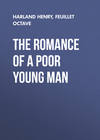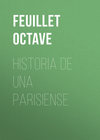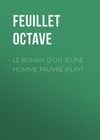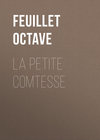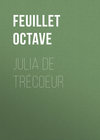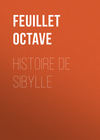Читать книгу: «The Romance of a Poor Young Man», страница 12
THE PORTRAITS OF OCTAVE FEUILLET
In spite of the fashionable popularity achieved by Octave Feuillet as early as the year 1855, a popularity which never waned to his last hour, it seems that his life, which we should have pictured excessively brilliant and public, was in reality quiet and retired. The author of "M. de Camors" and of the "Roman d'un Jeune Homme pauvre" was, as his portraits attest, melancholy of temperament and contemplative of mind, a man who was happiest in his own study, who preferred the distant echoes of his literary triumphs in his home, to noisy manifestations thereof in the world of social pleasure.

OCTAVE FEUILLET (In 1850) After a drawing by the engraver Monciau
Feuillet was the official novelist of the Second Empire, the pet writer of the Revue des Deux Mondes. He was received at Court among the distinguished guests who had the entrée at Compiègne and Fontainebleau. His plays and proverbes were acted in the Imperial theatres, at fashionable watering-places, and on the miniature stages of marionettes. The Empress treated him with marked distinction. It is difficult to understand why an author so honoured and so much sought after should have left so few portraits – canvases, medallions, water-colours or engravings. Feuillet evidently was not lavish of his time in his sittings to artists, for neither Dubufe, nor Carolus-Duran, nor Winterhalter reproduced his features – a fact we find it almost hard to believe of a man who enjoyed the popularity of Feuillet. But we must accept the fact.

OCTAVE FEUILLET (In 1879) After a sketch made in Geneva
Madame Octave Feuillet, to whom I went for final confirmation of this supposed dearth of artistic documents relating to her deceased husband, showed me everything she had as mementoes of the delicate psychologist to whose success she so largely contributed by her feminine diplomacy, her social observations, and her subtle and very cultivated mind.
"Alas!" she said, "I do not know why I am not richer in pictures of my dear lost one, for he had endless opportunities of being painted, but he was always too nervous and too busy to undertake the sittings proposed by various artists. This is why I can only show you a little portrait painted by Bonvin just before 1850, which represents him with a Musset-like face, and agrees pretty closely with a drawing of the same period by the engraver Monciau, which could easily be reproduced."

OCTAVE FEUILLET After a photograph taken in 1880
"Beyond these souvenirs of Octave Feuillet as a young man," continued his widow, "I have nothing but a drawing by Dantan, made at the time of the great success of the Sphinx at the Comedie Française, that is to say, about ten years before his death, and a large canvas by Hirch, a full-length, painted after 1880. But isn't it too dark for reproduction?"
To these portraits of the author of "Julia de Trécoeur" we may add a number of photographs, all of them taken after 1860. First, the large full-length portrait published by Goupil about 1869 in the "Galerie Contemporaine." In spite of the defects inherent in all photographs, this is the most like him of all his portraits: it is reproduced as the frontispiece of this volume. We have given several others, among them one from Monciau's drawing, which shows us an Octave Feuillet of thirty-five, who is nevertheless somewhat morose-looking, and various presentments of the quinquagenarian Academician, with the white hair and grey beard of a man still in his prime, which offer a much nobler and more attractive semblance of the writer who has been called "The family Musset."

OCTAVE FEUILLET The last photograph taken in 1889
After the death of the famous novelist and playwright, the sculptor Crauck executed a fine bust of him with the aid of instructions given him by one of the author's sons, Richard Feuillet. Another bust, of little interest and a poor likeness, is at the Hôtel de Ville of St. Lo, where Feuillet was born, and where he often came to rest at his property during the summer.

OCTAVE FEUILLET Sketch by Dantan, about 1878
Octave Feuillet's iconological record certainly does not arrest attention by any curious, startling, or hitherto unpublished elements. We have no childish or youthful portraits, nothing but the cold countenance of the man who had already "arrived;" no whimsical artistic sketch, not even any satirical caricature, to compromise, enliven, or give a Bohemian touch to the dignified attitude and severe correctness of the writer of the Revue des Deux Mondes. It is, we think, to be regretted. Octave Feuillet remains an over-official figure for us, bearing too obviously the stamp of the photographer's solemn poses, and sacramental "Quite still, please."
OCTAVE UZANNE.

